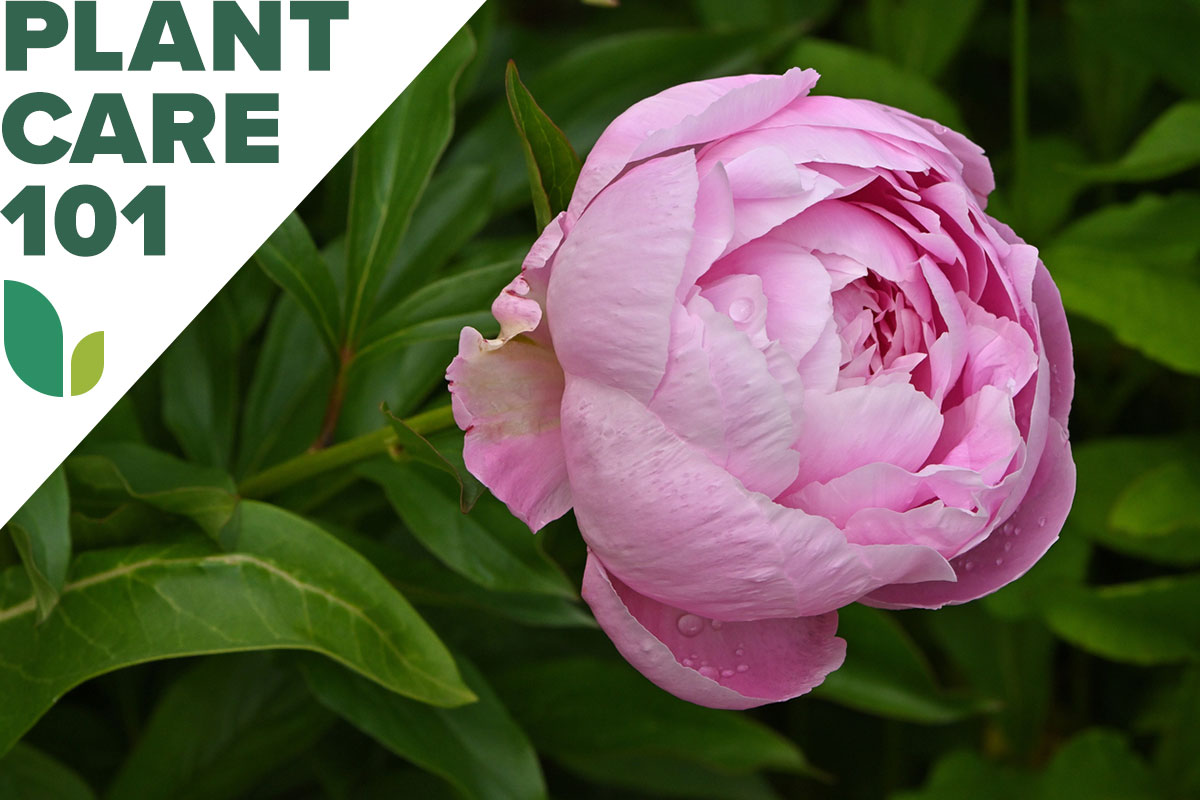

We may earn revenue from the products available on this page and participate in affiliate programs. Learn More ›
Popular for their lushly opulent late spring or early summer cut flowers, low-maintenance peony plants aren’t difficult to grow in the north. However, they can be tricky south of Zone 8 since they require winter temperatures below 40 degrees to flourish.
When considering how to grow peonies, keep in mind that they often won’t flower the spring after they have been planted or divided. Clumps of roots with at least three to four eyes (shoot buds) should bloom the second spring after their planting or division, but you may need to wait even longer for smaller clumps to grow.
Growing Peonies at a Glance
Common Name: Peony
Scientific Name: Paeonia spp.
Hardiness Zone: Varies from 3 to 9
Soil: Fertile, well-drained
Light: Full sun or morning sun
Water: Medium
Food: Low nitrogen, high phosphorus fertilizer
Propagation: Division or seeds
Safety: Toxic when ingested
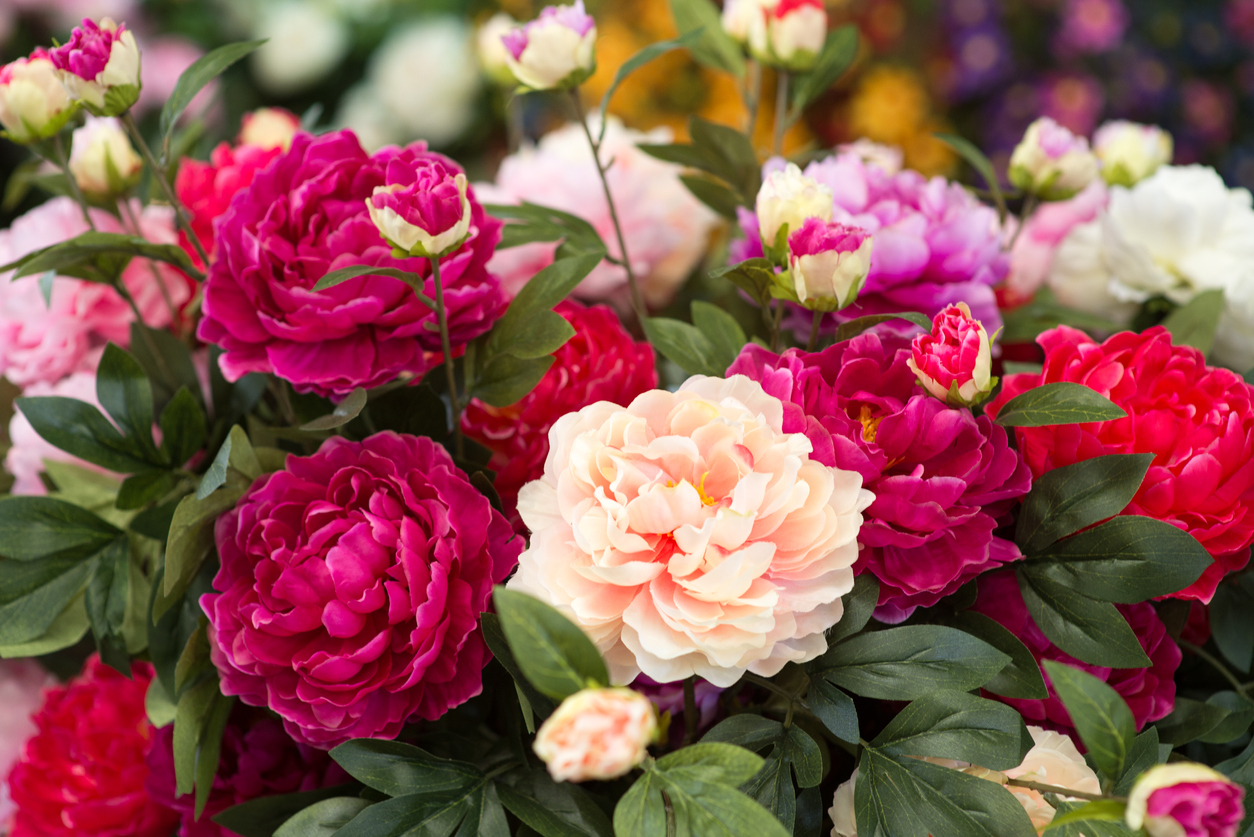
Peony Characteristics
Herbaceous peonies grow 2 to 4 feet tall with lobed foliage and blooms up to 10 inches across in a variety of styles, including single, semi-double, and fully double forms. They are hardy in USDA Zones 3 through 8, but their stems die back to the ground during winter.
Tree peonies can reach between 3 and 7 feet in height in USDA Zones 4 through 9, with silky blooms up to 12 inches across. Their woody stems don’t die back during winter but will shed their foliage then.
Itoh peonies resulted from crosses between the other types and have herbaceous peonies’ deciduous nature, but their flowers more closely resemble those of tree peonies. They grow 2 to 3 feet tall in USDA zones 4 through 9.
Pink peonies aren’t the only types available. The flowers come in a range of colors and peony season runs from late spring through early summer.
Recommended Peony Varieties
- ‘Bartzella’: Growing to 3 feet, this Itoh peony produces an abundance of 6 to 8-inch semi-double to fully double yellow flowers with scarlet centers.
- ‘Festiva Maxima’: Promising a “maximum celebration,” this popular heirloom herbaceous peony tops off at 3 feet, producing 5 to 7-inch highly fragrant double white blooms splashed with crimson.
- ‘Snow Lotus’: This tree peony cultivar grows to 4 feet, offers 8- to 10-inch single white blooms with purple-black splotches at their centers, and is much more heat- and drought-tolerant than most peonies.
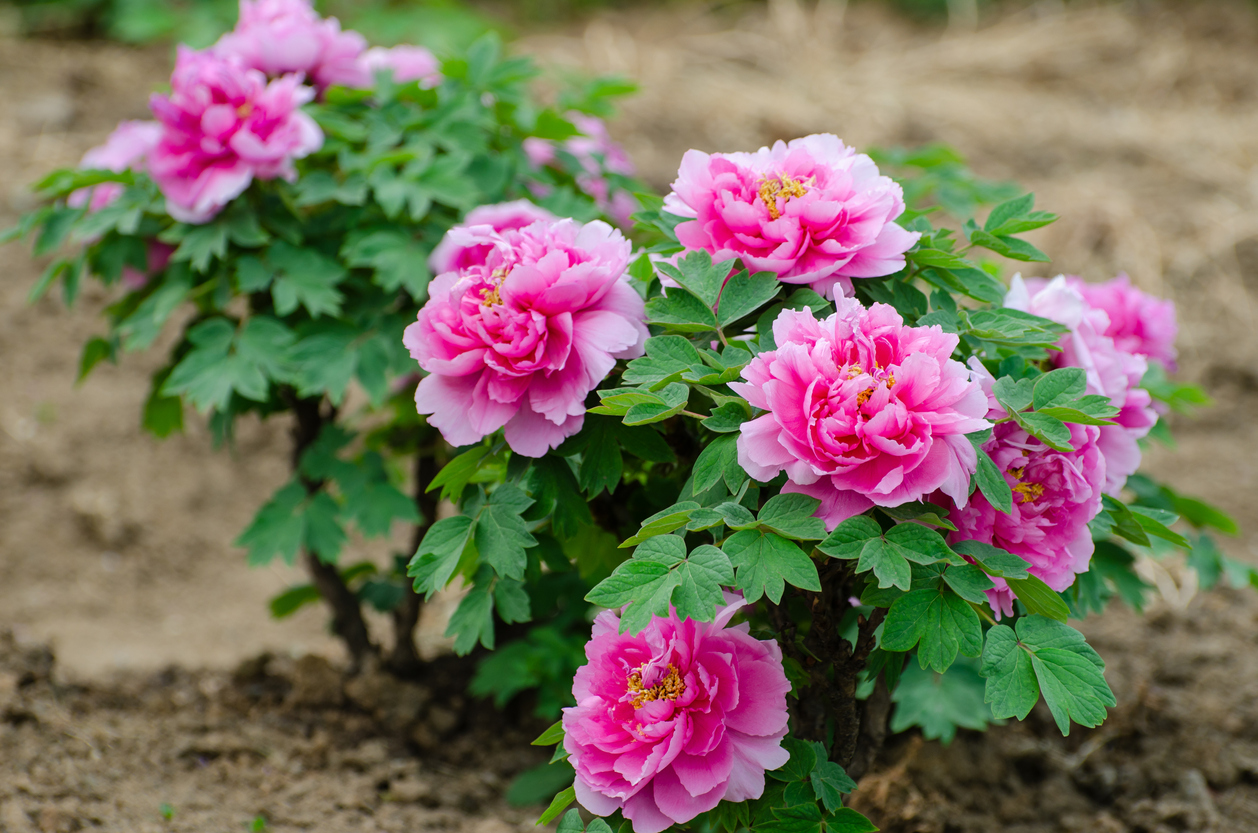
Planting Peonies
Place peonies in an area of your landscape where they can remain for a long time.
When is the best time to plant peonies
Plant peony roots in autumn about 6 weeks before your ground typically freezes. In Zones 8 and 9, set them out between late November and early February. Although it is possible to plant peonies in spring, they will bloom a year later than those planted in fall will.
Where can peonies grow?
For your peony garden, choose a location that offers well-drained fertile soil, with a pH between 6.5 and 7, and at least 6 hours of direct sunlight daily. Herbaceous peonies prefer even more sun, but blooms of tree peonies last longer if they receive shade during the afternoon hours.
How do you plant peonies?
Enrich your soil with compost and bone meal before you begin planting peonies.
- Plant the roots of an herbaceous or Itoh peony with the eyes 2 inches deep in USDA Zones 3 and 4, 1 inch deep in Zones 5 and 6, and ½ inch deep in Zones 7 and 8.
- Plant a grafted tree peony with its graft 6 to 8 inches deep or an ungrafted one with its stem/root junction 2 inches deep,
- Space herbaceous and Itoh peonies 3 feet apart, tree peonies 5 feet apart.
Can you grow peonies in containers?
Although it is possible to grow peonies in 18- to 24-inch containers, sellers often caution against that because the plants prefer a more permanent position. If you intend to leave your peony in an outdoor container all winter, it should be a cultivar that is hardy at least a couple zones north of your zone.
Watering Peonies
Peonies need about an inch of water per week, either from rain or irrigation. If you need to do the watering yourself as part of your peony care, a deep soaking once a week with about 3 gallons of water per plant should suffice. Just make sure that your soil is well drained, as peony roots can rot in soggy ground.
Although it is tempting to mulch the plants to retain moisture, that can bury the plants’ eyes too deeply, which may prevent them from blooming.
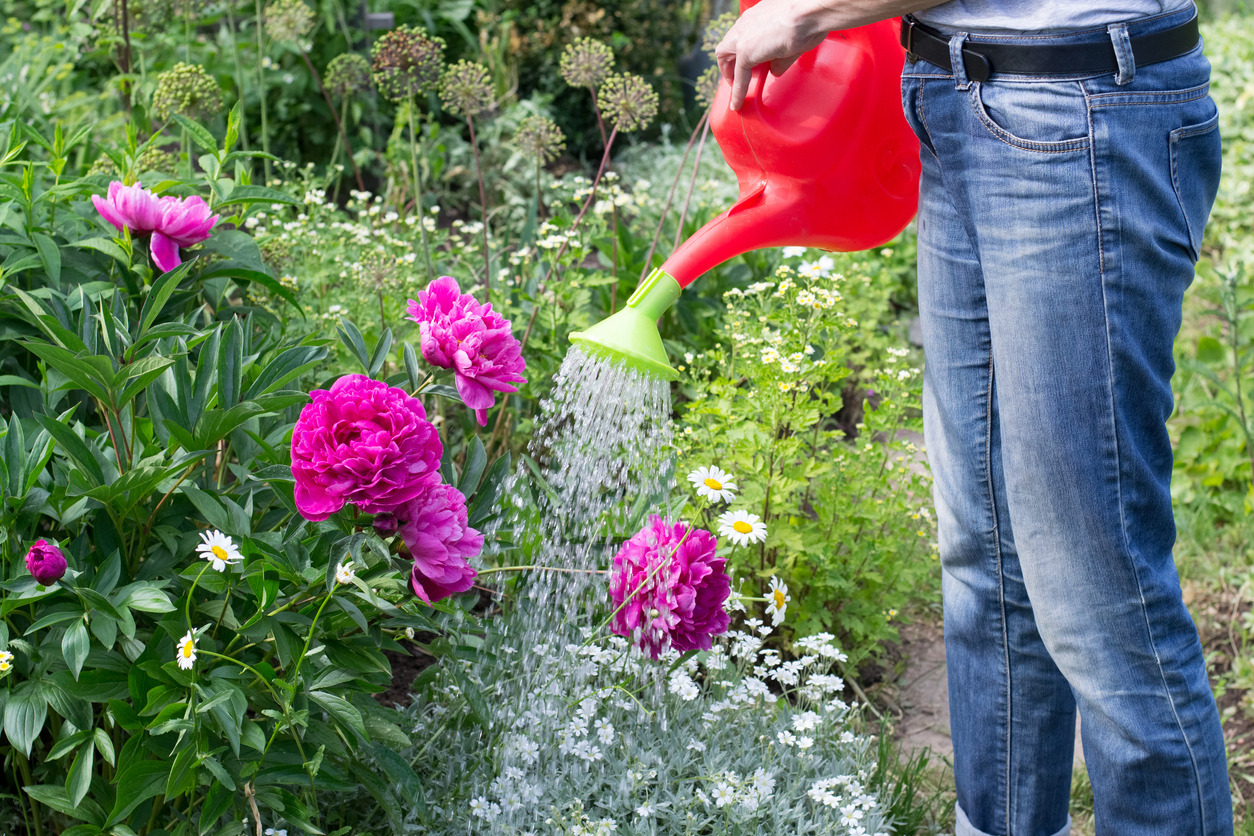
Fertilizing Peony Plants
Peonies in fertile soil usually don’t require additional feeding. Supplement those in less ideal conditions with a low nitrogen organic fertilizer such as 3-9-4 in early spring and again in early summer. In autumn give each plant ½ cup of bone meal and ½ cup of triple superphosphate.
Always apply granular fertilizers around the drip lines rather than near the centers of the plants, to protect the peonies from a buildup of “soil” over their eyes. Alternatively, use a liquid high-phosphorus organic fertilizer such as 2-3-1 fish and seaweed emulsion, applied at the recommended rates, for spring and summer feedings.
Pruning Peonies
Pruning peonies generally isn’t necessary except for removal of dead wood in tree peonies in spring and the cutting back of herbaceous and Itoh types in fall, described under “Preparing for Winter” below. In fact, if you cut peony flowers for bouquets, you should avoid removing more than half of the blooms on each plant, as any more cutting than that will weaken it.
After peony bloom time, you also should snip off the faded flowerheads before seeds form—leaving the foliage below them in place. That helps keep the plant concentrated on growth rather than seed production.
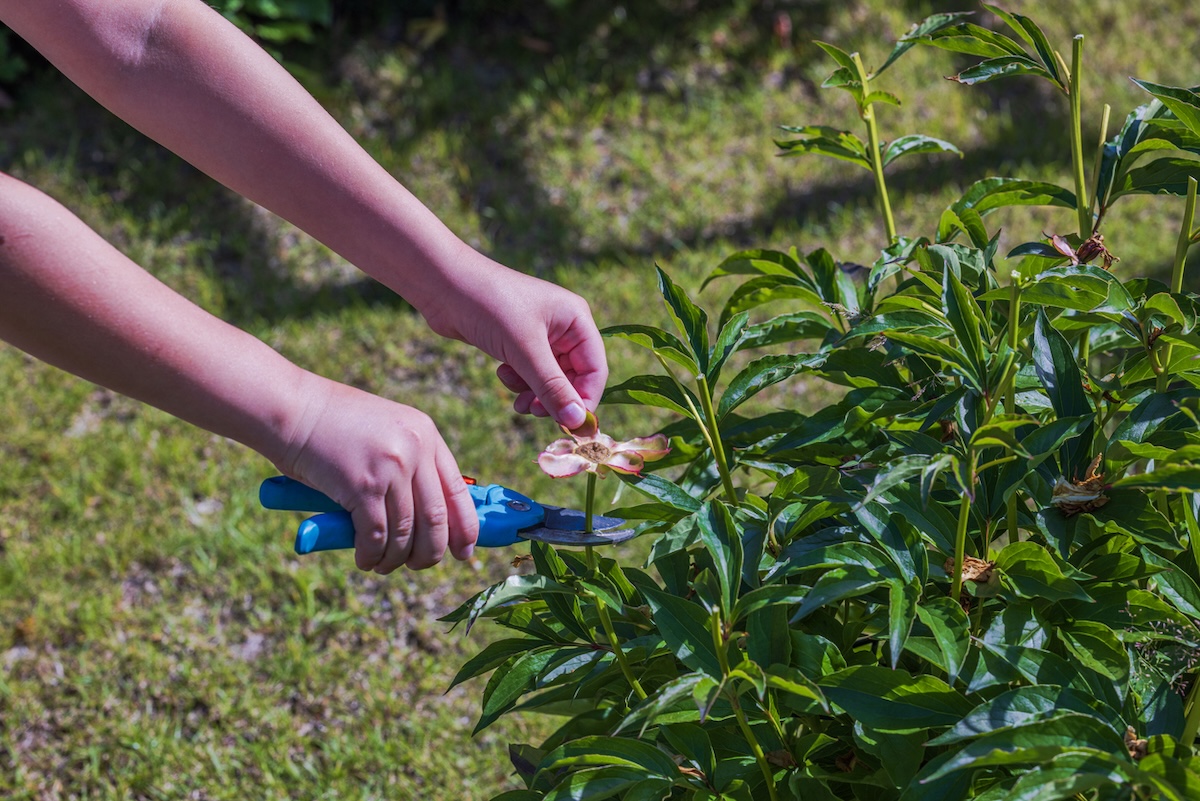
Propagating Peonies
To divide a peony from your garden, dig up its roots in autumn, after first cutting back its stems to 8 inches above the ground. Then use a sharp knife to cut the root mass into sections, each containing at least four eyes. Plant and space those clumps as you would with purchased roots.
Hybrid peonies don’t come true from seeds. To create your own cultivar, harvest seeds in late summer while they are still brown rather than black and sow them 2 inches deep outdoors to germinate in spring. Wait until autumn to transplant peony seedlings to their permanent location.
Safety Considerations
The ASPCA describes peony as toxic to dogs, cats, and horses, noting that it may cause “vomiting, diarrhea, and depression” in those animals if consumed.
As for humans, Toronto Master Gardeners site notes that “Confusingly, while the peony (Paeonia lactiflora) appears on many lists of edible flowers, it also appears on lists of poisonous plants…The Illinois Poison Centre classifies the peony’s toxicity as a “1” on its ranking scale of from 0 (non-toxic) to 3 (highly toxic)… Eating the rhizomes, seeds, or flowers of the peony can cause nausea, vomiting, abdominal pain, or faintness.”
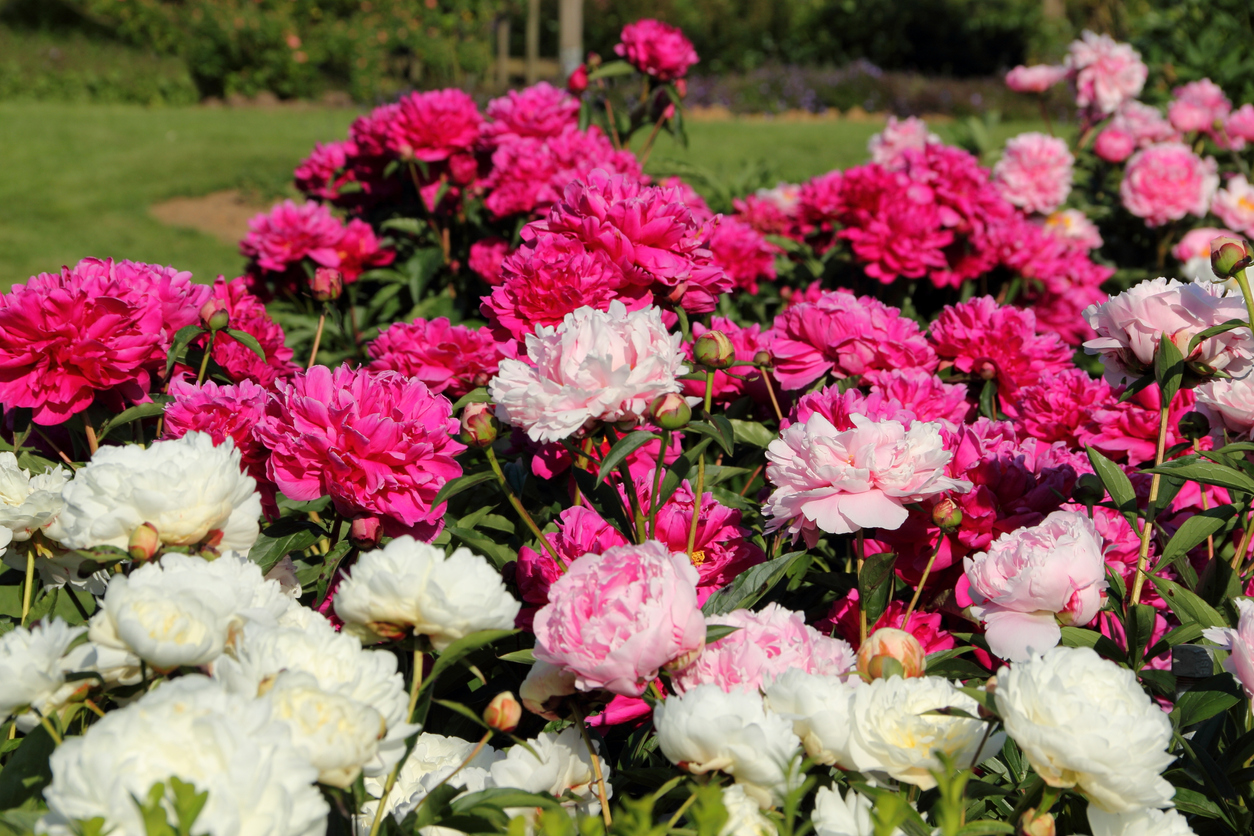
Potential Pests and Diseases
Peonies can develop fungal diseases such as leaf blotch and bacterial and botrytis blight which all cause foliage discoloration, while the latter may also brown buds. To help prevent such problems, provide plenty of space around your plants, avoid watering them from overhead, and clean up and remove all of the leaf debris around them in autumn.
As for the ants frequently found on peonies, they actually aren’t opening the flowers—as myth maintains—but sipping nectar from the plants’ nectaries. They do the blooms no harm and actually may protect them from more baneful insects.
Preparing Peonies for Winter
In late fall after your herbaceous and Itoh peonies have died back, remove all their foliage by snipping their stems off 3 inches above ground-level and dispose of them elsewhere. For tree peonies, simply strip off the shriveled leaves and leave the woody stems in place.
Even in warm zones, where peony plants may continue to grow into autumn, gardeners should remove their foliage in November to force dormancy, which is required for bloom. Peonies in winter should have bare ground around them, as mulch can bury the eyes too deep and, in southern climates, keep the plants too warm.
Looking for more low maintenance perennials and biennials? Check out our guides on growing daylily, foxglove, and hardy hibiscus.
